News
Atractylodes macrocephala
Atractylodes alba is a perennial herb in the genus atractylodes of asteraceae. The underground root is relatively thick, slightly fist-like, and the appearance is grayish-yellow; Stem erect, glabrous, lower middle cauline leaved, oblanceolate, oblong or elliptic; Leaves papery, green on both sides; Inflorescence grows alone on top of stem, florets purplish red; The achenes are obliquely conical, densely covered with long straight white hairs, and the crown bristles are feathery and stained white. Fruit period from 8 to October.
It was first published in Shennong Herbal Classics and listed as the top quality. It was first mentioned in Zhang Zhongjing's Treatise on Cold Disease. In the 18th century, Japan introduced white art from China as a crude medicine cultivation. It is cultivated in Jiangsu, Zhejiang and other places, but it is wild in Jiangxi, Hunan and other places, mostly growing in the hillside grassland and hillside forest. Baizhu likes cool, mild climate, strong cold resistance and low soil requirements.
White art is a commonly used bulk Chinese herbal medicine, processed since the Tang and Song dynasties, generation after generation, in use until now, with tonifying qi and spleen, dry dampness and water, antiperspirant, fetal and other effects, in the herbal works of the past dynasties, such as "This classic" and "Materia Medica Hui Yan" are recorded.
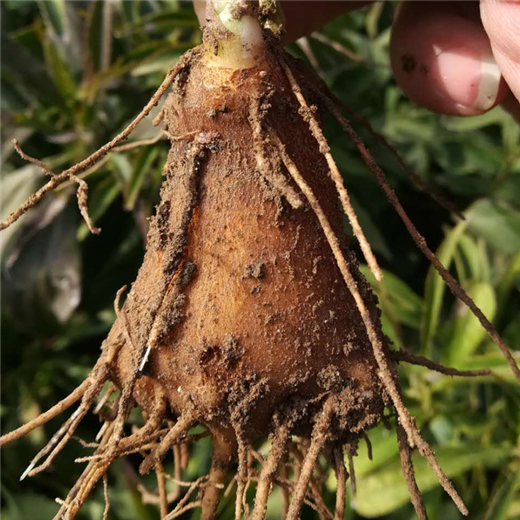
Morphological characteristics
Atractylodes is a perennial herb in the genus atractylodes in the asteraceae family. It is 20-60 cm tall and has tuberous rhizomes. Stems erect, usually long branched from middle to lower, all smooth without hair.
The underground root is relatively thick, slightly fist-like, and the appearance is grayish yellow. Stems erect, glabrous, middle and lower stems with leaves.
Leaves alternate, middle stem leaves with petioles 3-6 cm long, leaves usually 3-5 pinnately lobed; Rarely heterophyllous and oblong-elliptic. Lateral lobes 1-2 pairs, oblanceolate, elliptic or oblong-elliptic, 4.5-7
cm long, 1.5-2 cm wide; Apex lobes larger than lateral lobes, obovate, oblanceolate, oblong or elliptic; From the middle stem and leaves upward to downward, the leaves gradually smaller, with the middle stem
and leaves, the lower part of the inflorescence of the leaves undivided, elliptic or oblong, sessile; Or most of the stems and leaves are not divided, but always mixed with 3-5 pinnately divided leaves. All leaves are
thin in texture, papery, green on both sides, glabrous, with long or short needle-like marginal hairs or fine spiny teeth along the margins or lobes.
Inflorescence single stem tops, small purplish red flowers, plants usually have 6-10 heads, but do not form a distinct inflorescence arrangement. Bracts green, 3-4 cm long, needle-pinnately lobed. The involucre is
large, broad campanulate, 3-4 cm in diameter. Involucral bracts 9-10 layers, imbricate arranged; Outer and middle outer layers long ovate or triangular, 6-8 mm long; Medium lanceolate or elliptically lanceolate,
11-16 mm long; The innermost layer is wide and linear, 2 cm long, with a purple top. All bracts have blunt tips and white spider hairs on the margins. The florets are 1.7 cm long, purplish red, with 5 deeply split
crown eaves.
Achenes obliquely conical, 7.5 mm long, covered by a layer of long, straight, dense white hairs ascending and subventing. Crested seta feathery, soiled white, 15 cm long, base bound into rings. Fruit period from August
to October.
Habitat of origin
It is distributed in Jiangsu, Zhejiang, Fujian, Jiangxi, Anhui, Sichuan, Hubei and Hunan, etc., but it is cultivated in Jiangxi, Hunan, Zhejiang and Sichuan, and wild, wild mostly grows in hillside grassland and hillside forest.
Type specimens were taken from Japanese cultivation types. But there is no wild type in Japan. The Japanese white art was introduced by China in the 18th century for cultivation as a crude medicine. Wilderness is
born in mountainous and hilly areas, and wild species have disappeared in their origin. Now there are many cultivated places, with the largest number of cultivated in Zhejiang.
Growth habit
Baizhu prefers cool, mild climate, cold and drought tolerance, and avoids accumulation of water. The optimum growth temperature is 15~22℃, and the growth is rapid at 24~29℃. The optimum temperature for rhizome
growth is 26~28℃. The optimum temperature for seed germination is 25~30℃. The soil requirements are low, and it is appropriate to choose a slightly inclined slope with high and dry terrain, a deep soil layer, loose and
fertile, and a sandy loam with good drainage, avoid continuous cropping, and it is best to plant on a newly reclaimed land. Planted land, must be more than 5 years to do again, otherwise prone to disease. The previous
crop is good for gramineous crops, and can not be rotated with cruciferae and solanaceae crops which are prone to white silk disease.
Propagation method
Propagate with seeds. The main method in production is seedling transplanting.
Seedling cultivation:
From late March to early April, select new seeds with full seeds and no pests and diseases, soak in warm water at 30℃ for 1 day, remove buds and sow. Drill or broadcast sowing. The drill sower, before sowing, according to the row spacing of 15 cm to open the trench, the trench depth of 4-6 cm, the irrigation in the trench, the seeds are planted in the trench, the soil is covered after sowing, a little suppression, the bed covered with grass insulation and moisture, and then poured water once. Use 5-7 kg per 667 square meters. 7-10 days after sowing, the seedlings will emerge, and the cover grass will be removed after emergence to strengthen field management. Before the winter transplant, 667 square meters can cultivate 400-600 kilograms of fresh technology.
Transplanting:
It can be transplanted from winter to spring of the following year. It is better to have no leaf flowering, strong main bud, small and neat rhizome and large apricot pit. When transplanting, cut off the roots, open a 10cm deep ditch according to the row spacing of 25cm, put the seedlings into the ditch according to the plant spacing of about 15cm, and the tooth tips face up, and level with the ground. After planting on both sides slightly repress, after planting water. Generally 667 square meters need fresh white art 50-60 kg.
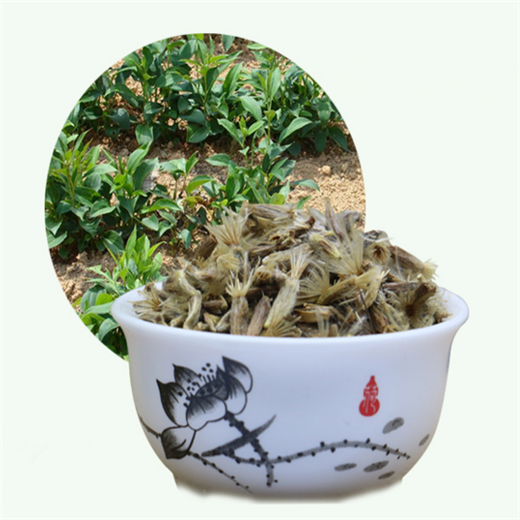
Cultivation technique
It is appropriate to choose a slightly inclined slope with high and dry terrain, deep soil layer, loose and fertile soil, and good drainage sandy loam cultivation, avoid continuous cropping, and it is best to plant on
newly reclaimed land. Planted land, must be more than 5 years to do again, otherwise prone to disease. The previous crop is good for gramineous crops, and can not be rotated with cruciferae and solanaceae
crops which are prone to white silk disease.
Soil preparation and fertilization
Seedling land should choose medium fertility, good drainage, cool ventilation of slightly acidic sandy loam, 667 square meters of farm fertilizer 2000 kg, deep ploughing, raking smooth and fine, for 1.2 meters wide bed.
Fertile, ventilated, cool and well-drained sandy loam that has not been planted for 5 years should be selected for the field. The previous crop is good for grass crops, after the previous harvest, 667 square meters of farm
fertilizer 3000 kilograms, with 50 kilograms of superphosphate as the base fertilizer, 20 centimeters deep, made into 1-1.5 meters of beds.
Field management
After the seedlings are unearthed, weeds should be weeded in time and seedlings should be thinned according to 4-6 cm between the plants. If the weather is dry, weeding can be done between plants to reduce water
evaporation. In areas where conditions exist, water can be watered in the morning and evening to combat drought. If bolting is found in the later period of growth, it should be removed in time.
Disease and insect control
The disease is white silk disease. Plant after soaking the seed with 1000 times 50% bactericide solution, and sprinkle lime around the plant to disinfect. Or irrigate the diseased area with 1000 times 50% methyltobuzin solution.
The blight can be irrigated with 50% carbendazim 1000 times solution. The onset of iron leaf disease from 6 to 8 months, spray 1∶1∶100 Bordeaux liquid or 50% methyl tobuzine or carbendazim 1000 times liquid. Rust can
spray 25% powder rust ning 1000 times liquid. Root rot is sprayed with 50% carbendazim 500 times solution and 50% methyl tobuzin 100 times solution or 50% tobuzin 800 times solution. Other sclerotium disease, root knot
nematode disease, Mosaic disease, dodder and other harm. The insect pests are white art seed worm, white art long tube aphid, red spider, scarab, tiger and so on.
If you have ideas about the seeds, please contact us freely.
Categories
Contact Us
- +86-18055849900
- +86-18055849900
- admin@high-key.cn
- +86-18055849900
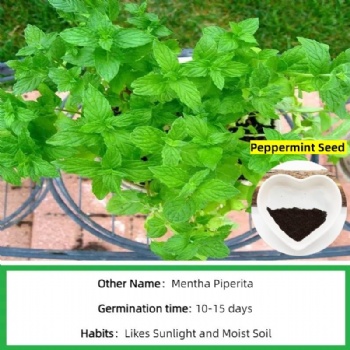
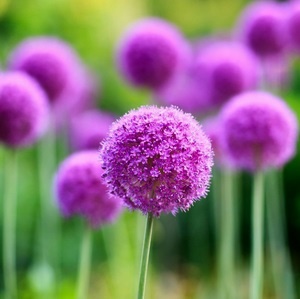
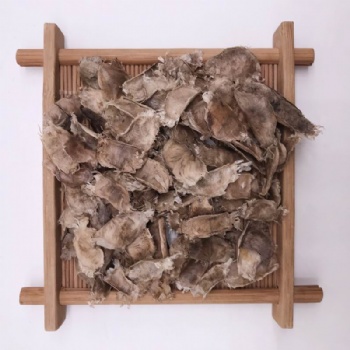
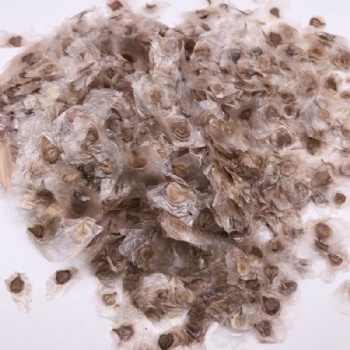
 售前客服
售前客服
